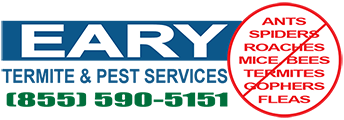
21 Mar FAQ About Drywood Termites and Your Home
When you commit yourself financially to the purchase of a California home, you want to protect that major investment as thoroughly as you can. While the threats from natural disasters and extreme temperatures may seem evident enough, you might easily overlook another lurking danger: infestation by drywood termites.
Like other kinds of termites, drywood termites can wreck the wooden components that give your home its structural integrity. The more you know about these destructive creatures, the more easily you’ll spot an infestation in the works and schedule the appropriate pest treatment. Start with these frequently asked drywood termite questions.
How Do Drywood Termites Differ From Other California Termites?
California residents and business owners may encounter drywood termites, subterranean termites, and/or dampwood termites. While all three of these creatures can damage homes and buildings, they also offer distinct differences that can help you figure out what kind of termite problem you face.
The major difference between drywood termites and subterranean termites lies in the fact that subterranean termites require moist soil to thrive, while drywood termites can happily nest in wood, with no need for soil or water. This preference also distinguished drywood termites from dampwood termites.
How Do Drywood Termites Invade Homes?
Drywood termites usually migrate in the summer months, with swarms taking to the air in search of new wood for their nests. This swarming activity usually takes place during daylight hours from summer to fall. Once they find a promising structure, they can get in through tiny cracks in walls, foundations, and door or window trim.
Once drywood termites enter your home, they can do even more wood damage than other bothersome species of termites. They tend to chew into wood against the grain, creating tunnels in the softer, weaker areas of the wood. This destruction can weaken wooden beams and other critical structures until they collapse.
When Should You Suspect a Drywood Termite Infestation?
Aside from the seasonal swarms of flying drywood termites, you might not see any signs of these pests in your home at first glance. For one thing, you won’t see the mud tunnels characteristic of subterranean termites. These tiny creatures leave equally tiny holes in wood, making them hard to detect by a non-expert.
Fortunately, drywood termites can leave other evidence of their activity behind. One common sign involves the presence of fecal pellets called frass. You may also notice a broken termite wing or even a dead termite here and there, which can confirm your suspicions.
How Do Pest Control Professionals Handle Drywood Termite Problems?
Professional treatment strategies for a drywood termite infestation may include either spot treatment or whole-house treatment. Whole-house treatment relies on either fumigation with chemicals or the application of heat. Heat treatment allows you to re-enter your home sooner, but it may not work equally well in all rooms and spaces.
Spot treatment for drywood termites may rely on chemical or non-chemical methods. Your pest control technicians may use chemical foams, dusts, or liquids to knock out specific nesting areas. Non-chemical techniques may employ electrocution, microwave energy, or biological controls.
How Can You Avoid Future Drywood Termite Issues?
Because drywood termites like to move from one source of wood to another, you can reduce the odds of an infestation in your home by clearing plenty of space between the home and outdoor piles of firewood or wooden debris. You should also seal any gaps in your home’s structure that permit these termites to enter.
Regular vigilance can help you spot and deal with a drywood infestation in its earliest stages. Watch for any new holes in your home’s outdoor deck or other exterior wooden features. Schedule regular inspections according to your pest control provider’s recommendations.
If you need help ridding your beloved California home of drywood termites, contact Eary Termite & Pest Services. Our pest control team can investigate for signs of the invaders, administer effective treatment techniques, and advise you on preventative measures. Contact us today.




Sorry, the comment form is closed at this time.